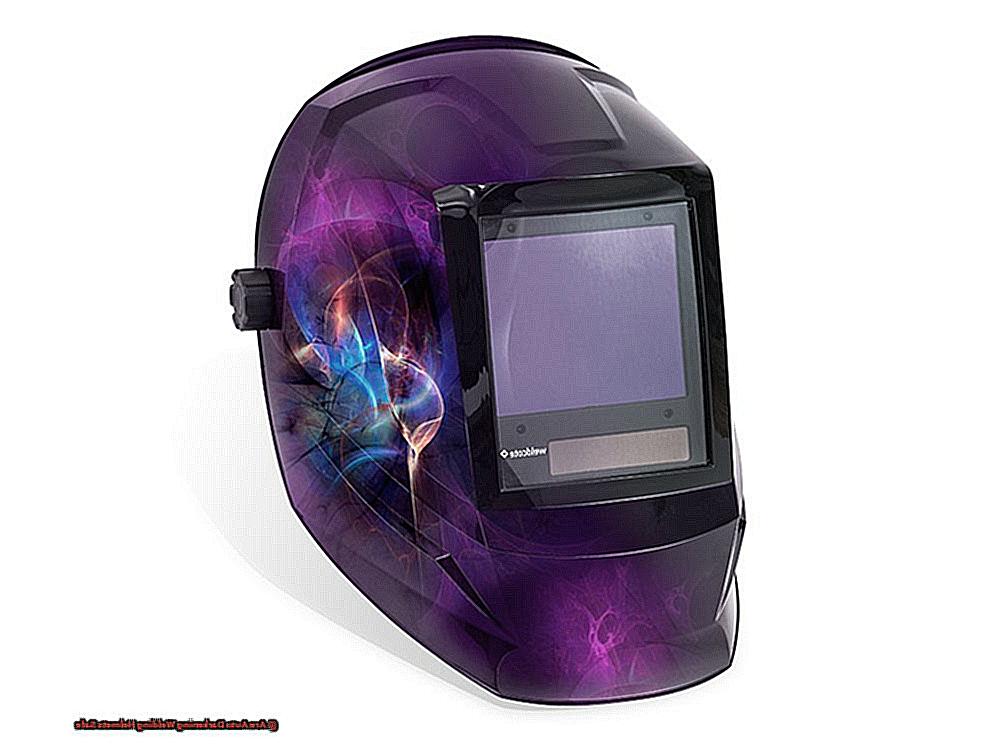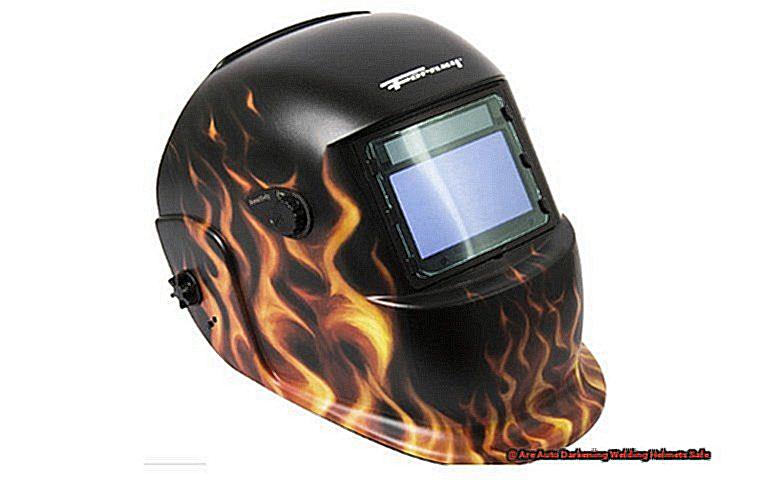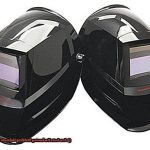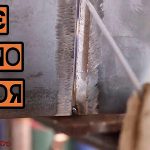As skilled welders, we understand the importance of safety in our craft. One crucial aspect of welding safety is protecting ourselves from the harmful fumes and particles that are produced during the process.
That’s where filters come in. These essential tools work to remove hazardous substances from the air, creating a safe working environment for both the welder and those nearby.
So, put on your welding helmet and join us as we delve into this important topic.
What Type Of Filter Is Used For Welding Fumes?
Contents
- 1 What Type Of Filter Is Used For Welding Fumes?
- 2 The Importance of Proper Filtration for Welding Fumes
- 3 Types of Filters Used for Welding Fumes
- 4 Mechanical Filters: How They Work and Their Effectiveness
- 5 Electrostatic Precipitators: A Different Approach to Filtering Welding Fumes
- 6 Activated Carbon Filters: An Emerging Technology for Welding Fume Control
- 7 Combination Filters: Providing Comprehensive Protection Against Welding Fumes
- 8 Conclusion
If so, then you are likely familiar with the potential hazards associated with welding fumes. These noxious gases can pose a threat not only to the welder but also to those in the surrounding vicinity, making proper filtration systems an essential component of any welding process. However, with the plethora of filter options available, it can be overwhelming to determine which type is most suitable for your specific needs. In this article, we will delve into the diverse array of filters utilized for welding fumes and analyze their effectiveness in safeguarding your well-being.
The most frequently employed type of filter for welding fumes is mechanical filters. These filters operate by physically entrapping particles in the air using a delicate mesh material. Nonetheless, their efficacy hinges on the size of particles they can capture and their ability to sustain a high airflow rate. This implies that while mechanical filters may proficiently capture larger particles, smaller ones may still escape through the mesh. Additionally, if the filter becomes clogged, it may impede the airflow rate and diminish its effectiveness in purging fumes from the air.
Another alternative is electrostatic precipitators, which employ an electric field to entrap charged particles from the air. As the air traverses through the electric field, the particles become charged and are attracted to plates within the filter. While these filters are highly effective at capturing minuscule particles, they may struggle with larger ones that can bypass the electric field.
In recent years, activated carbon filters have also gained popularity due to their capacity to adsorb hazardous gases and vapors onto their surface. With an extensive surface area, activated carbon can apprehend a broad range of particles and gases. However, these filters require frequent replacement as they can become saturated with pollutants and lose their effectiveness.
For comprehensive protection against welding fumes, combination filters are an excellent choice.
The Importance of Proper Filtration for Welding Fumes
Welding is a crucial process in various industries, including construction and manufacturing. However, it also presents potential dangers, such as exposure to welding fumes. These fumes are a mixture of gases, vapors, and solid particles that are produced during welding. But do not underestimate their invisible nature – welding fumes can lead to severe health risks and create hazardous working conditions if not properly controlled.
So, what can be done to safeguard workers and maintain a safe workplace? The answer lies in proper filtration for welding fumes. In this article, we will explore the significance of filtration for welding fumes and the different types of filters available.
Why is Proper Filtration Crucial?
Welding fumes are not merely harmless smoke; they can contain harmful substances like metal oxides, ozone, and nitrogen oxide. These particles can result in respiratory issues, including asthma, bronchitis, and even lung cancer when inhaled. They can also decrease visibility and create fire or explosion hazards.
That is why proper filtration is vital in protecting the health and safety of workers and sustaining a secure working environment. With an appropriate filter, noxious particles can be eliminated from the air before workers inhale them.
Types of Filters for Welding Fumes
The type of filter used for welding fumes depends on the welding process employed and the materials being welded. Here are three common filter types used for welding fumes:

Mechanical Filters
Mechanical filters are the most widely used type of filter for welding fumes. They function by physically trapping particles on a filter medium made of fiberglass or synthetic materials. These filters are effective in capturing larger particles but may not be as efficient when it comes to smaller ones. They also require regular replacement to maintain their effectiveness.
Electrostatic Precipitators
Electrostatic precipitators use an electrical charge to capture particles from welding fumes. These filters operate by generating a static charge that allows particles to adhere to the filter plates.
Types of Filters Used for Welding Fumes
The world of welding is filled with sparks and metal, but beneath the surface lies a hidden danger: fumes and gases. These invisible threats can be just as harmful as the visible ones, making proper filtration systems a necessity for the safety of all involved. Let’s delve into the various types of filters used for welding fumes, their strengths and weaknesses, and how they protect welders.
One of the most commonly used filters for welding fumes is the mechanical filter. Its mechanism is simple yet effective – it physically traps particles in the air using a fine mesh material. However, its efficiency may vary depending on the size of particles it can capture and its ability to maintain a high airflow rate. While these filters are great at capturing larger particles, smaller ones may slip through the mesh. And when the filter becomes clogged, it hinders airflow and becomes less effective in removing fumes from the air.
Another popular type of filter for welding fumes is the electrostatic precipitator. This filter uses an electric field to trap charged particles from the air. As the air passes through, the particles become charged and are drawn towards plates inside the filter. While electrostatic precipitators excel at capturing small particles, they may struggle with larger ones.
In recent years, activated carbon filters have gained momentum in filtering welding fumes. These powerful filters work by adsorbing (not absorbing) harmful gases and vapors onto their surface. With its vast surface area, activated carbon can capture a wide range of particles and gases. However, they require frequent replacement as they become saturated with pollutants and lose their effectiveness.
For comprehensive protection against welding fumes, combination filters have emerged as a popular choice. These filters combine mechanical, electrostatic, and activated carbon filtration to provide maximum safety in high-risk environments.
Mechanical Filters: How They Work and Their Effectiveness
The world of welding is a fiery and hazardous one, where welders must brave the intense heat and sparks of molten metal. However, beneath this seemingly dangerous surface, there is an invisible danger that can have serious consequences on the health of welders – the fumes and gases produced during welding. This is where mechanical filters come into play, acting as the first line of defense against these harmful particles.
But how exactly do these mechanical filters work? Unlike their more common AI counterparts, these filters use physical methods to capture and remove particles from the air. Imagine it as a fishing net – the filter traps the fumes and particles while allowing clean air to pass through. The effectiveness of a mechanical filter depends on its ability to capture particles of varying sizes, with smaller particles requiring a more efficient filter.
However, not all mechanical filters are created equal. There are different types of filters used for welding fumes, each with its own unique capabilities. The most widely used type is the high-efficiency particulate air (HEPA) filter, renowned for its ability to remove up to 99.97% of particles as small as 0.3 microns. While highly effective, these filters can be costly and require frequent replacement.
Another type of mechanical filter is the electrostatic precipitator (ESP). This filter uses an electric charge to attract and trap particles from the air, making it effective in removing both large and small particles. However, its efficiency may decrease over time if not properly maintained.
Cartridge filters are also commonly used in welding shops. These filters consist of tightly packed pleated paper or polyester fibers and can capture particles as small as 0.5 microns in size. While relatively easy to maintain, their efficiency may vary depending on their quality.
Having the right type of filter is essential, but maintenance also plays a crucial role in ensuring its effectiveness. Regular cleaning or replacement is necessary to keep filters functioning at their best.
Electrostatic Precipitators: A Different Approach to Filtering Welding Fumes
When it comes to the world of welding, ensuring the safety of workers is of utmost importance. The fumes and gases produced during this process can pose a significant threat if inhaled, making filters an essential tool in keeping the air clean. For decades, the go-to solution for this has been mechanical filters, but they come with their own set of challenges, including frequent replacements and cleaning. However, there is a game-changing alternative that has been gaining popularity in recent years – electrostatic precipitators (ESPs).
ESPs use an electric charge to eliminate particles from the air, unlike traditional filters that rely on physical trapping techniques. This fundamental difference translates into a much higher efficiency rate of 99% or higher, compared to traditional filters’ average efficiency of 90-95%. Such a significant difference is crucial when it comes to capturing small and hazardous particles found in welding fumes, such as metal oxides and nanoparticles.
But efficiency isn’t the only distinguishing factor between these two types of filters. The maintenance requirements are also worth considering. Traditional filters need regular replacements or cleanings to remain effective, while ESPs only require occasional cleaning of the plates to remove accumulated particles. This means less downtime for workers and lower maintenance costs in the long run.
Speaking of costs, traditional filters may seem like a more affordable option at first glance. However, considering their lower efficiency and frequent replacements, they can end up being more expensive than ESPs in the long run. This makes ESPs a more cost-effective solution for filtering welding fumes.
One potential drawback of ESPs is that they require a power source to operate, which may not be readily available in certain settings. Traditional filters, on the other hand, do not need electricity and can be used in remote locations.
Activated Carbon Filters: An Emerging Technology for Welding Fume Control
Welding is an essential process in various industries, but it poses its own set of challenges, including the release of harmful welding fumes and gases. These pollutants not only jeopardize the health of workers but can also taint the air quality in the workspace. This is where activated carbon filters come into play as an emerging technology for welding fume control.
But what exactly are activated carbon filters? Also known as activated charcoal, they are a highly porous material that has been treated to increase its surface area and enhance its absorptive properties. This unique characteristic makes it an ideal filter medium for eliminating volatile organic compounds (VOCs) and other pollutants from the air.
Activated carbon filters work wonders in removing nuisance level organic vapors during welding. They function by adsorbing harmful fumes and gases onto their surface, effectively trapping them and preventing their release into the air. This not only safeguards workers from potential health hazards but also improves the overall air quality in the workspace.
A common application of activated carbon filters is in welding galvanized steel. The process of galvanization involves coating steel with zinc to prevent rusting. However, when welded, this zinc coating can emit unpleasant odors and tastes into the air, causing discomfort for workers. Activated carbon filters prove to be highly effective in removing these odors and enhancing the overall air quality.
But how do activated carbon filters measure up against other welding fume control methods? Traditional filters like electrostatic precipitators have been the go-to solution for many years. However, these filters often require high maintenance costs and result in downtime for workers. In comparison, activated carbon filters not only boast a higher efficiency rate of 99% or more in eliminating hazardous particles but also incur lower maintenance costs and less downtime for workers.
In conclusion, activated carbon filters stand out as an innovative solution for welding fume control, especially in applications where nuisance level organic vapors are present, such as welding.
Combination Filters: Providing Comprehensive Protection Against Welding Fumes
Combination Filters: Offering Comprehensive Protection Against Welding Fumes
As a welder, you are well aware of the hazards posed by welding fumes. These noxious particles and gases are generated during the welding process and can have disastrous consequences on your health if proper precautions are not taken. This is where combination filters come into play – they provide all-encompassing protection against welding fumes, making them an essential tool for welders.
But what exactly are combination filters, and how do they deliver such effective protection? Let’s delve into the details.
What Are Combination Filters?
Combination filters are specialized air filters that are specifically designed to capture and eliminate harmful particles and gases from the air. They employ a multi-stage approach to filtration, utilizing mechanical, HEPA, and chemical methods. This multi-stage approach is what sets them apart from other types of filters in effectively removing welding fumes.
The Multi-Stage Technique
The first stage of a combination filter involves mechanical filtration, where a pre-filter traps larger particles like metal dust and slag. This prevents them from clogging the main filter, enabling it to function more efficiently. The second stage utilizes a high-efficiency particulate air (HEPA) filter, which can capture particles as tiny as 0.3 microns with 99.97% efficiency. This includes smaller particles that may have evaded the pre-filter.
The third stage is where the real magic happens – chemical filtration. This stage employs activated carbon or charcoal to capture and neutralize gases and vapors produced during welding. Activated carbon has a porous structure that allows it to ensnare molecules of various sizes, making it highly effective in eliminating a wide range of chemicals and odors. Charcoal, on the other hand, works by adsorbing gases onto its surface, preventing their release back into the air.
Conclusion
Safety is of utmost importance in the world of welding. As skilled welders, we are well aware of the hazards posed by fumes and particles generated during the welding process. That’s where filters come in – crucial tools that work tirelessly to remove these harmful substances from the air, creating a safe working environment for all.
In this blog post, we have delved into the various types of filters used for welding fumes and their effectiveness in safeguarding our well-being. From mechanical filters to electrostatic precipitators and activated carbon filters, each has its own strengths and limitations. However, one filter stands out as a comprehensive solution for welding fume control – combination filters.
Combination filters employ a multi-stage approach to filtration, combining mechanical, HEPA, and chemical methods to provide all-encompassing protection against welding fumes. The pre-filter traps larger particles while the HEPA filter captures tiny particles with an impressive 99.97% efficiency. The final stage utilizes activated carbon or charcoal to capture and neutralize gases and vapors.
But what makes combination filters more effective than other types? Their multi-stage technique allows them to target a wide range of particles and gases, providing thorough protection against welding fumes. This makes them an essential tool for ensuring the health and safety of welders in high-risk environments.
In conclusion, proper filtration is crucial for maintaining a safe working environment for welders. By understanding the different types of filters available and their capabilities, we can make informed decisions about which type best suits our specific needs.





